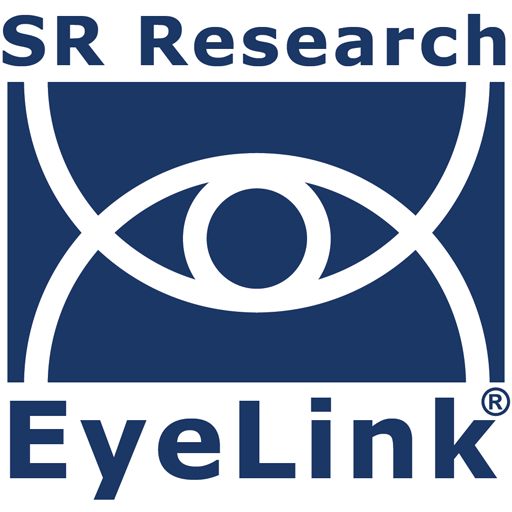
Eye tracking offers a non-invasive, objective window into brain function, making it an invaluable tool in clinical research. By precisely measuring eye movements, researchers and clinicians can potentially identify biomarkers for various neurological and psychiatric disorders. Eye tracking measures can also provide quantitative data on cognitive and attentional processes that are often disrupted in clinical populations, and provide objective measures of change due to therapeutic interventions.
Benefits of EyeLink Eye Trackers in Clinical Research
For the demanding requirements of clinical research, the EyeLink 1000 Plus, EyeLink Portable Duo, and EyeLink 3 offer unparalleled precision, accuracy, and reliability. The EyeLink 1000 Plus is a versatile system ideal for lab-based studies and can easily be integrated with other biometric recording devices, including EEG, MEG, fMRI and fNIRS. The lightweight EyeLink Portable Duo enables researchers to conduct studies with patients at their bedside or in other clinical settings. The head-mounted EyeLink 3 provides robust data collection when both head and eye movements need to be taken into account, for example research into patients with vestibular disorders.
EyeLink systems are used to provide crucial insights into numerous areas of clinical research, including:
- Autism Spectrum Disorder (ASD): Reduced gaze to eye regions may serve as an early diagnostic biomarker for ASD. Eye tracking can potentially help explain the core social communication challenges and is used to evaluate the effectiveness of behavioral therapies.
- Nystagmus / Oculmotor Dysfunction: Eye trackers can be used to visualize the nystagmus waveform and identify critical characteristics such as the amplitude and frequency of the fast phases, as well as whether the slow phases are accelerating or decelerating.
- Schizophrenia: Deficits in smooth pursuit and increased intrusive / corrective saccades are well-established findings in schizophrenia. Clinicians and researchers use these oculomotor tests to study the genetic basis of the disorder and to measure cognitive function during treatment.
- Neurodegenerative Diseases: Eye-tracking can potentially reveal non-invasive biomarkers for diseases like Parkinson’s and Alzheimer’s. For example, increased saccade latencies are associated Parkinson’s disease, while distinct visual search patterns may help in the early detection and monitoring of cognitive decline in Alzheimer’s.
- Anxiety Disorders and PTSD: This research focuses on measuring attentional bias toward threatening stimuli. Individuals with social anxiety, phobias, or PTSD often show more prolonged gaze toward threat-related cues (e.g., angry faces), providing an objective measure of the cognitive mechanisms that maintain anxiety.
- Reading Disorders (Dyslexia): Eye tracking is a critical tool for diagnosing and understanding dyslexia. It reveals characteristic reading patterns, such as longer fixation durations, more frequent backward movements (regressions), and inefficient scan-paths, providing direct insight into the challenges of text processing.
- Traumatic Brain Injury (TBI) and Concussion: Oculomotor assessments using eye tracking can detect subtle deficits in eye control following a head injury. Difficulties with smooth pursuit, saccades, and vergence are common after a TBI, and can potentially be used to diagnose concussions and track a patient’s recovery progress.
- Attention-Deficit/Hyperactivity Disorder (ADHD): Researchers use eye tracking to objectively measure inattention, distractibility, and poor inhibitory control in individuals with ADHD. By analyzing gaze patterns during cognitive tasks, clinicians can better understand the specific attentional and executive function deficits that characterize the disorder
- Mood Disorders (Depression): In depression research, eye tracking can be used to study biases in processing emotional information. Depressed individuals often show increased dwell time on sad or negative stimuli and reduced attention to positive stimuli, which reflects the negative cognitive biases central to the disorder.
Case Study Examples of EyeLink Eye Trackers in Clinical Research
强大的软件解决方案
EyeLink eye trackers are supported by a powerful suite of software. Experiment Builder provides an intuitive graphical interface for designing and running experimental tasks. WebLink records gaze behavior while participants interact with websites, software applications and even tablets and mobile phones. Data Viewer is a powerful tool for visualizing and processing the rich datasets that EyeLink eye trackers provide. EyeLink systems are also fully compatible with third-party stimulus presentation software, including E-Prime, PsychoPy, and Psychtoolbox, ensuring flexibility for any research lab.
With their outsanding data quality, sophisticated software ecosystem, and proven track record across thousands of peer-reviewed studies, EyeLink systems are the perfect choise for clinical scientists seeking to perform cutting edge eye tracking research.
For information regarding how SR Research products can help your research, please contact us. We are happy to help! To see peer-reviewed published research with EyeLink eye trackers, see our list of over 13,000 publications or our sample of case studies.



